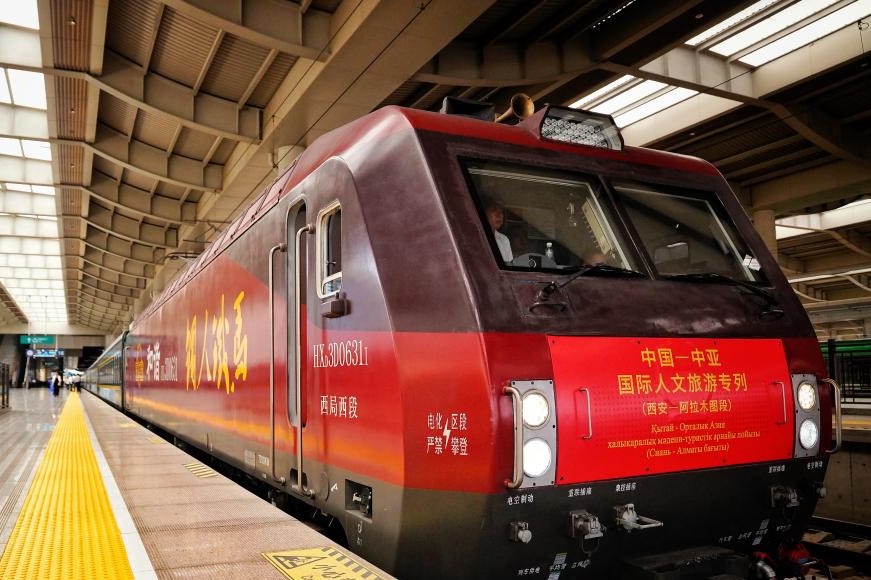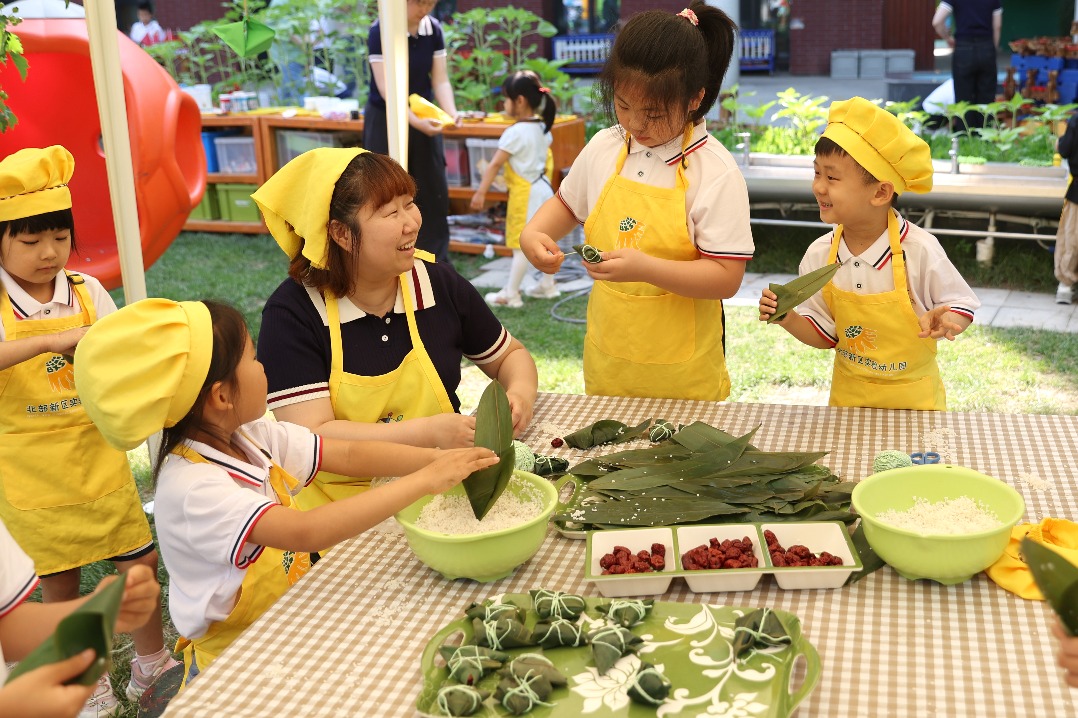A heartwarming taste of bucolic life

Editor's note: To understand China, sit down to eat. Food is the indestructible bond that holds the whole social fabric together. It is also one of the last strong bonds of community and culture.
Every time we retreat to our home in Kunming, we barely have time to settle down before the first visitors arrive. The air is fresh, the flowers bloom all year-round, and the pace of life slows significantly.
Our friends, like us, value country life as a temporary escape from the hectic urbanization taking place all over China. Out in the countryside, it is a totally different lifestyle. And while they are here, they always have time to go to market with us.
Our little village market has become the highlight of their visit. They marvel at the rustic atmosphere, and they say it's something they only get to see on television these days.
| A village market in the outer suburbs of Kunming highlights seasonal fruits and local street foods. Photos by Cang Lide / For China Daily |
It was not always so, but in the big cities, community markets have all but disappeared as the government tightens control in the face of growing food safety issues. Supermarkets are easier to regulate.
We treasure our accidental tourist attraction precisely because in the last 10 years we, too, have seen the future loom before our eyes.
We live in the outer suburbs of Kunming on the back slopes of the Western Hills, and we shop in Taiping, Village of Peace. It is indeed a tranquil little place, with one major street with a post office and a village square that is the hub of the community.
Every Wednesday and Sunday, farmers from the hinterlands gather to sell their produce, barter, meet friends and exchange gossip.
On market days, the village square comes alive at the crack of dawn. In the strengthening light, the silhouettes of smallholders carrying their wares into the market crowd out the shadows.
Inside the sheds, pale golden light from bare bulbs gradually brightens to show rows of meat stalls where freshly-slaughtered animals are neatly laid out in different cuts.
Nearby, chickens and ducks in cages start crowing and cackling, and the pigeons coo softly in theirs. Yes, poultry is still freshly slaughtered here.
There is a sudden splash as an errant carp makes a futile attempt to escape from a tank. Eels, crucian carps, snakeheads and local freshwater perch move restlessly in their crowded tanks. The fishmongers scrub their tree-trunk chopping boards and sharpen their knives, waiting for their first orders.
More vegetables arrive in baskets hanging from bamboo poles balanced on thin sunburned shoulders. Their owners stake out strategic positions in and around the narrow streets of the village square.
Some have tender cabbage hearts, others have the local mustard greens still dappled with dew, and there are bunches of various leafy herbs and roots. Selections of earthy mushrooms harvested before dawn and freshly foraged fiddle heads are carefully laid out in straw baskets.

Bulbs of single-headed garlic and onions are piled up on canvas sheets laid on the ground. Nearby, potatoes and jicama are still stacked up in gunny sacks.
In autumn, Yunnan has an amazing number of greens, peppers, roots, gourds and squashes and they fill the vegetable counters with a kaleidoscope of colors. Most of the produce in our market comes straight from the villagers, whose farms are spread out along the fertile foothills.
Pomegranates are in season. They, too, are piled up in little mountains. On top of each hill is a fruit, split open to show off the jewel-like seeds.
One by one, the shops open.
Freshly-made buns make their presence felt even before they are brought out in huge bamboo steamers, their sweet fragrance perfuming the morning air. Plain buns, buns stuffed with red bean paste or flavored custards, buns filled with savory mince - these will soon fill the hungry stomachs starting to gather.
Next to the bun stacks, the bean curd vendor arranges little wooden stools around low tables, ready for her customers. Her husband is frying long dough fritters that will go with hot bowls of soft bean curd. There is also a bubbling pot of tea-cooked eggs, a breakfast favorite.
Another type of tofu is also eaten for breakfast - squares of lightly fermented stinky bean curd sizzling on a flat griddle. The fragrance of the chili dip is already attracting the first customers.
Local rice pancakes or erkuai can be eaten many ways, but in the mornings, they are mostly grilled over charcoal and filled with chopped salty pickles, coriander, chili and a dough fritter.
You can also buy ready-to-eat food for lunch at the market if you're not up to cooking, or are expecting special guests. The market favorite is whole roast ducklings, and there are several stalls with special rotisseries set up.
Here, you can pick out your duck and have it cut up. It is sold with a tub of dark sweet bean paste and a little packet of spicy chili dry dip. At the same stall, there are salads of kelp, pickled cucumber, Chinese artichokes and carrots, seasoned hard beancurd and braised pig's ears that will make perfect side dishes
Pickles are very popular and glass jars full of sweet, tangy and spicy vegetables are piled three tiers high, waiting for customers to mix and match.
Many tribes live around the village, coming from the ethnic Yi and Bai groups. They practice homeopathy, foraging for herbal roots and shoots from around the surrounding countryside, so there are always interesting spiels as they try to sell their concoctions.
Market day is when the villagers replace pots, pans, cutlery and crockery, refill the linen cupboard or wardrobe, and find new pets.
Most of the houses in our estate, for example, rear chickens and ducks on vegetable patches and this is where the stock is replenished.
In the alley, vendors have bamboo enclosures full of fluffy chicks and ducklings. There are rows of cages with rabbits, guinea pigs, hamsters and an occasional tree shrew or two. Terrapins and goldfish are also on display in blue plastic tubs.
This being Yunnan, there are lots of potted plants and flowers for sale, and you can get all kinds of seeds for flowers, fruits and vegetables.
This is just another day in the life of our village market, but its days are numbered.
We hear that the villagers are to be relocated in housing estates soon, near the petroleum refinery town of Anning, and most will lose their tiny farms.
There is a new hotel being built at the end of the village square, catering to a nearby theme park and golf course, and already there is a new supermarket being built on top of its car park.
This is progress.
paulined@chinadaily.com.cn
(China Daily European Weekly 10/21/2016 page19)
Today's Top News
- Tariffs threaten global green push
- China-Central Asia cultural tourism train inaugurated
- Asian security model for regional peace
- China condemns US plan to revoke students' visas
- Mayors vow to boost friendship of cities
- Revoking visas of Chinese students 'aggressive' power play in no one's interest































